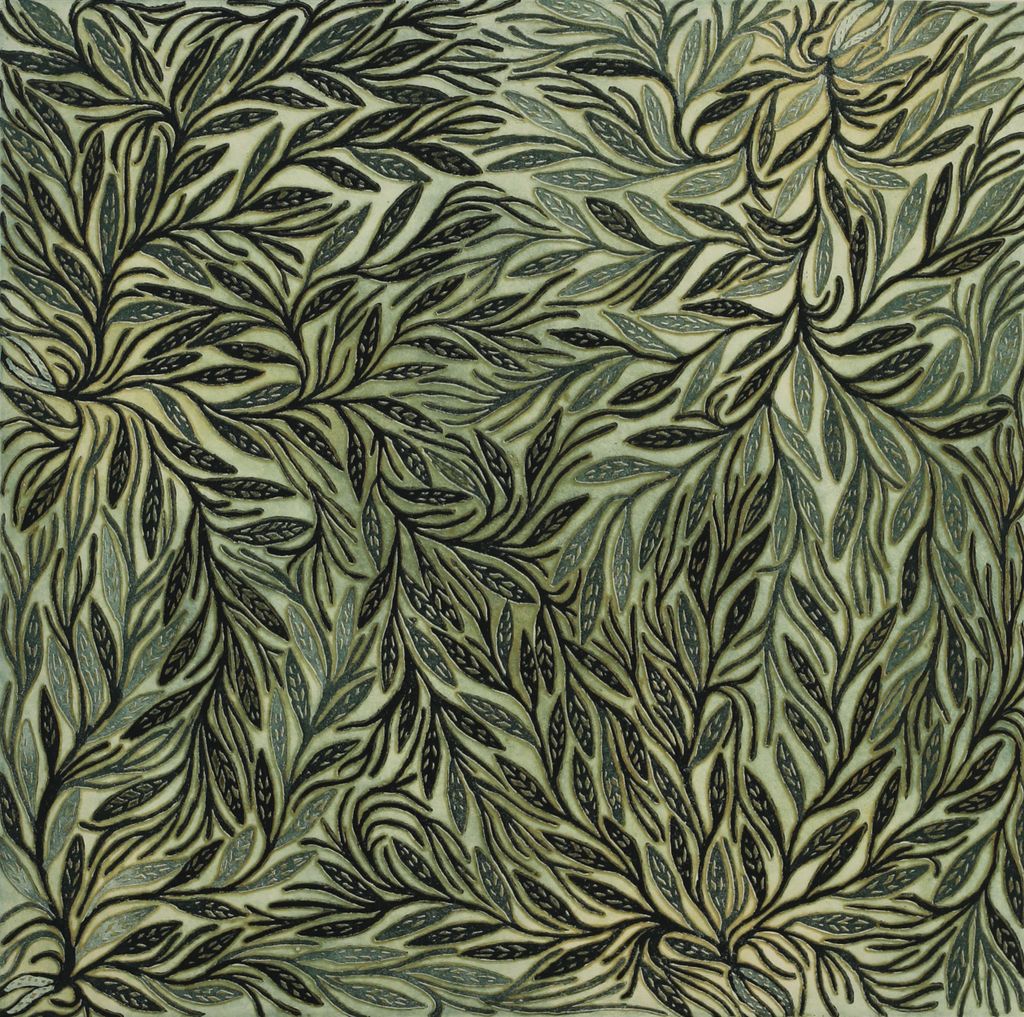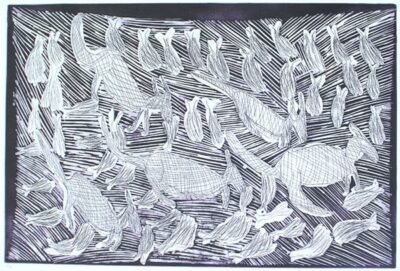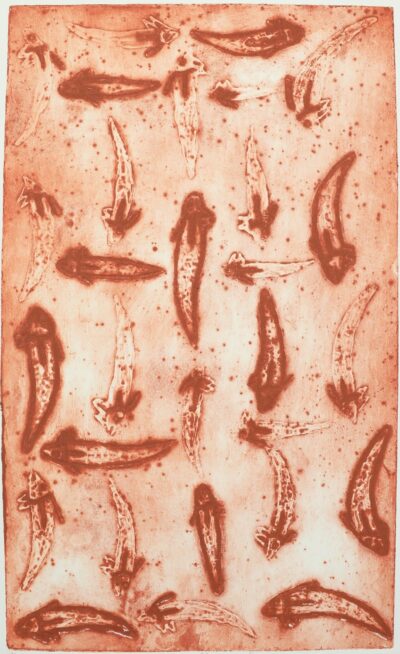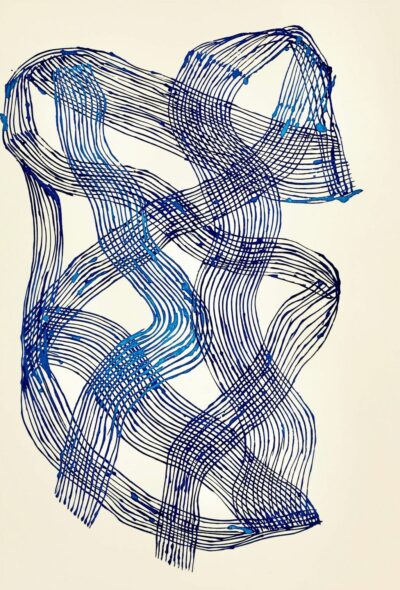Description
djirrirra wununmurra
Etching
Image Size: 50 x 49cm; Paper Size: 68.5 x 67.5cm; Paper: Hahnamuhle
Year: 2024
ID: 4126-24
Yukuwa
Yukuwa is one of the personal names of the artist and Yukuwa is the topic of this work. Almost a self-portrait this motif first arose when she had been challenged about her right to paint Buyku the fishtrap imagery of her own clan and homeland by a family member. Rather than argue she retorted by painting imagery which in one sense is her own personal identity. The complaints in relation to Buyku evaporated but Djirrirra persists with the Yukuwa imagery with the encouragement of her art centre.
This piece is a reference to Yirritja renewal ceremony which is by definition a shared communion of Yirritja moiety clans which does not relate to circumcision or mortuary rites. Spirits of deceased people are on a cyclical journey from their point of death to the reservoir of souls particular to their clan identity. But at these irregular ceremonies they all congregate for one last dance together before heading their separate ways. There are relationships between Yirritja moiety clans that are renewed through Yukuwa ceremony at particular sites which relate to the ritual exchange of sacred objects, song and dance.
Yukuwa is a yam whose annual reappearance is a metaphor for the increase and renewal of the people and their land. Traditionally the invitation to such a ceremony is presented as an object in the form of a yam with strings emanating from it with feathered flowers at the end. This is a suggestion of the kinship lines which tie groups together. The site referred to in this piece is in the area between Gäṉgaṉ and the sea known as Balambala described as the next river from Gäṉgaṉ. This is a cleared area which is an ancient ceremonial site at which special men’s ceremony involving both ḻarrakitj (or Dhan’parr- bark coffin) and special yiḏaki occurred. An ancient hero known as Burruluburrulu danced here.
It is described as a meeting place for Dhalwaŋu, top Maḏarrpa (Dholpuyŋu) and Munyuku. These ‘renewal’ ceremonies in Yolŋu law occur irregularly when the time is right. They are independent of the funeral, circumcision and age grading ceremonies that occur all the time. They are held at specific natural clearings within the general Stringybark forest that covers most of Arnhem land.
The documentation of a different work detailing the Garma site at Gulkula (which is another of these sites) says as follows:
“Some of the dancers at 2003 Garma (who used a whistle in their ritual call and response) were Dhalwaŋu singing this site. An ancient hero known as Burruluburrulu danced here. There is another naturally cleared site at Rurraŋala which is an analogous ‘ceremony ground of the gods’. Gulkula is another time honoured meeting place for such ceremonies. The stories of such sites also involve Waṯu (dogs), Garrtjambal (red kangaroos) and (Ŋerrk) cockatoos. Ŋerrk are the Yirritja moiety harbingers of death and therefore related to the mortuary aspect of the ḻarrakitj ceremony. The Gumatj ancestral hero/giant Ganbulabula called and presided over such a ceremony in ancestral time at Gulkula. During the ceremony a member of Dhamala (sea eagle) clan was misbehaving with various giggly young women of Matter (flying fox). This distracted people from their sacred observance and caused disharmony amongst the camp.
To express his displeasure and end the behaviour Ganbulabula threw the finely worked memorial pole he had been painting from the edge of the escarpment to the ocean below where it still exists imbuing these waters with special properties. And thus when the stringybark blossom attracting flying fox to the escarpment White breasted Sea Eagles still cruise the edge picking off less careful bats. The Gumatj leaders hold ceremony aimed at unifying people and paint and display ḻarrakitj. The multidimensionality of sacred time means that the songs of this place relate to the past the present and the future simultaneously.
In any event the conception is that when these ceremonies are held by mortals during the day the spirits conduct their own rituals at night. Indeed their nocturnal activities are often audible in the main camp during such ceremonies. It seems as if it is a necessary part of their farewell to this dimension to have this last ceremony.”







Reviews
There are no reviews yet.